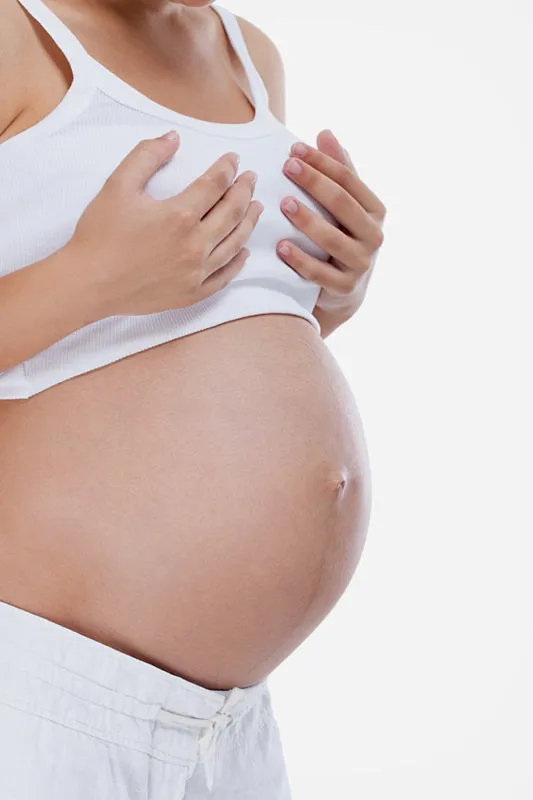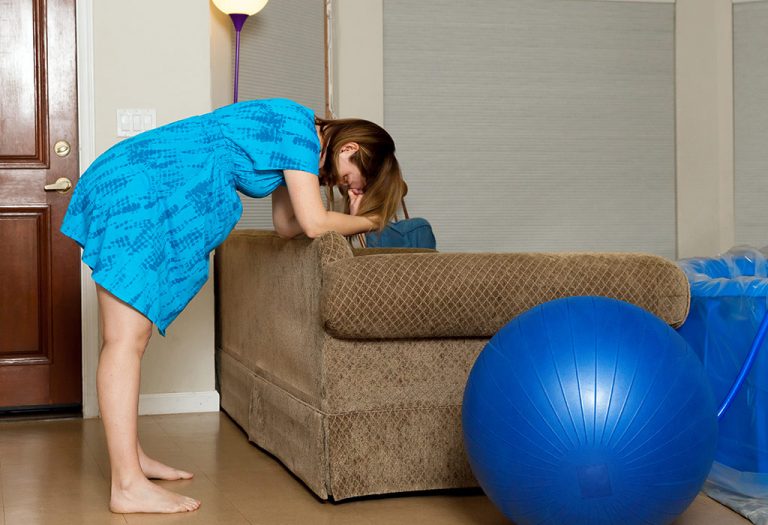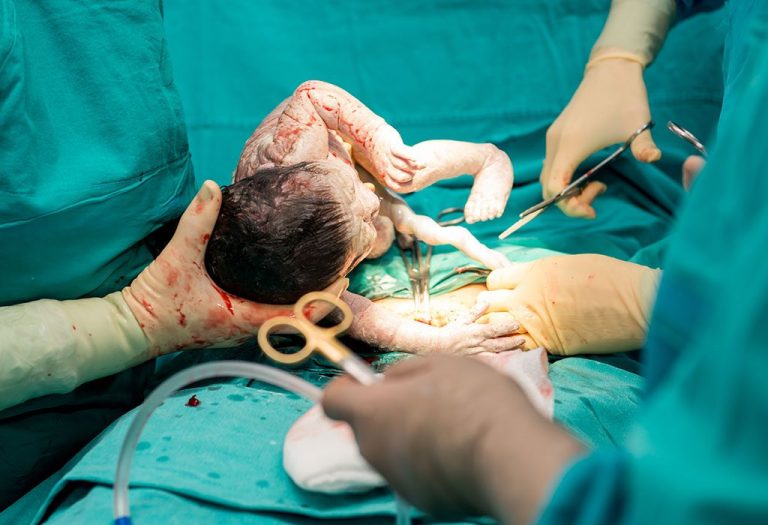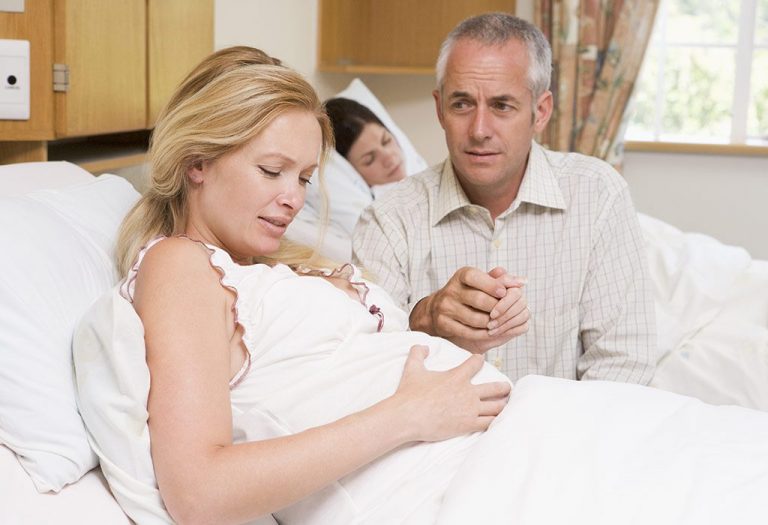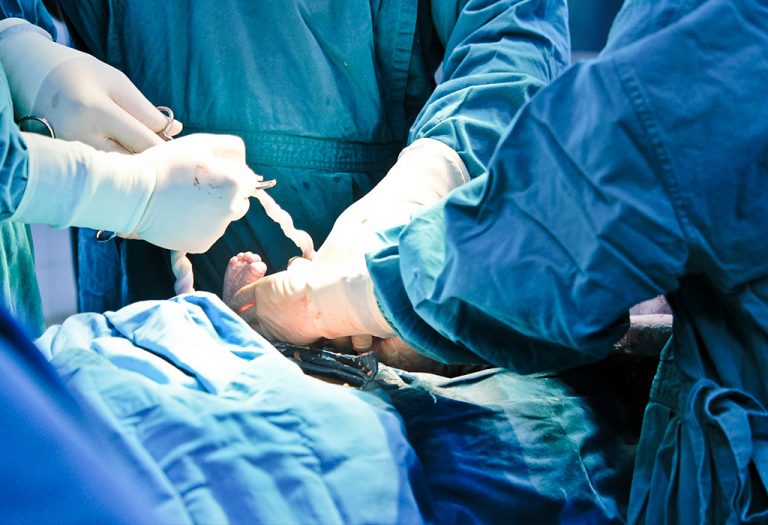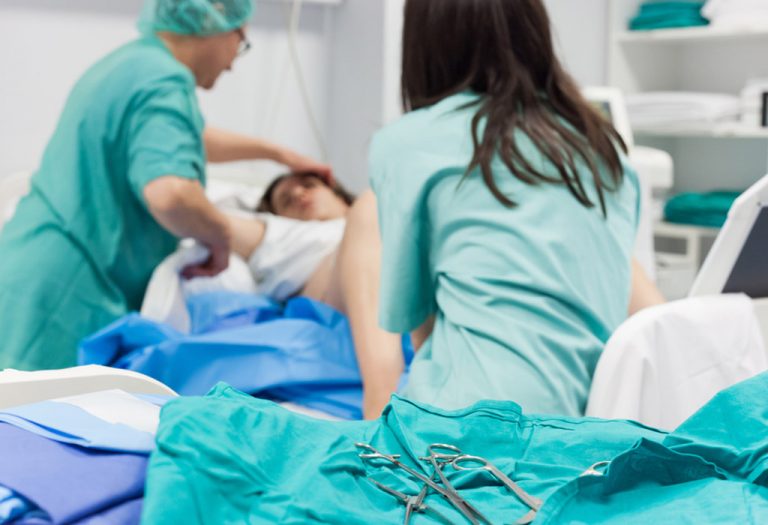Nipple Stimulation to Induce Labour – How Does It Work

Sometimes, it becomes necessary to induce labour or strengthen contractions during labour naturally. Nipple stimulation becomes a useful tool at such times. It helps speed up pre-labour, too. Women who notice that their contractions have either stopped entirely or slowed down can benefit by artificially inducing labour through nipple stimulation. This method releases the hormone Oxytocin into the body, which causes uterus contraction and induces labour. While several doctors don’t recommend nipple stimulation to induce labour, some anecdotal evidence say otherwise. Scroll through the article to find out whether nipple stimulation for induction of labour is safe and beneficial.
Is it Safe to Induce Labour at Home?
Before trying any techniques to induce labour, you should speak to your doctor and understand its advantages and disadvantages. It entirely depends on your medical history if breast stimulation to induce labour can prove to be a safe method for you. It is important to do this because most home induction methods do not have any scientific evidence to prove their effectiveness. Speak to a trusted medical professional if you are worried about going past the due date and enlighten yourself about the following:
- What are the methods you recommend to induce labour, naturally or medically?
- When would you recommend using these techniques if labour does not begin on its own?
- When must I arrive at the hospital if the contractions begin?
Can Nipple Stimulation Bring on Labour?
Let’s answer the popular question, “Does nipple or breast stimulation induce labour?” Although you should not count on nipple stimulation to bring about labour, it can work if there haven’t been any complications during pregnancy (1). There is limited evidence that this technique works, and it can prove to be a laborious and time-consuming method (2).
How Does Nipple Stimulation Work?
When nipples are rolled or rubbed, the female body releases oxytocin, which initiates labour and arousal. Oxytocin is produced in the hypothalamus region of the brain and secreted by the pituitary gland (3). It is also known to contract the uterus after labour. In fact, the drug Pitocin, which doctors use to induce labour, is a synthetic version of the oxytocin hormone (4).
How to Do Nipple Stimulation
Before you begin with this method, it has to be noted that nipple stimulation should be carried out only when the pregnancy is normal. Here’s how you should carry it out:
- Stimulate only one nipple at one time.
- A combination of the forefinger and the thumb should be used to gently roll the nipple.
- Stimulate the area around the areola and pull the nipple downwards to make it erect. Oral licking or gentle sucking or use of a breast pump can cause it to become erect too.
- After the nipple becomes erect, continue the stimulation for another minute.
- Stop the process for a couple of minutes or more.
- Move on to the other nipple and repeat the same process
- Wait for a couple of minutes before working on the first nipple.
Nipple stimulation can be carried out orally, by hand or using a breast pump. The stimulation should ideally mimic the suckling done by a baby, so you can ask your partner to do that, too. You can even stimulate your own nipples during labour. Apply coconut oil or breast milk if your nipples become sore and tender due to the stimulation.
How Long Does it Take to Induce Labor?
The timing for nipple stimulation to induce labour may vary from woman to woman, and how sensitively your uterus reacts to the oxytocin. While some take days to go into labour after the stimulation, some start on contractions shortly after the stimulation. A 2018 study on breast stimulation for labour induction found that the oxytocin levels were at their highest on day 3 after breast and nipple stimulation for three days at regular intervals. Additionally, a third of pregnant women present in the trial had labour within 72 hours of the breast and nipple stimulation (5).
Risks of Nipple Stimulation to Bring on Labor
Nipple stimulation may be risky depending on the pregnancy and its complications. The best time to begin nipple stimulation is when you are in a low-risk pregnancy and past your due date.
Starting the stimulation early, even before your body or the baby has decided, could make the labour challenging, like inducing the water-breaking process earlier than the body has intended to or putting the labour pattern off balance.
Overdoing nipple stimulation may also lead to uterine hyperstimulation or strong contractions (6). If your contractions feel unusual, like fairly close contractions, or too uncomfortable after nipple stimulation, it’s better to stop.
Knowing when to start and stop nipple stimulation to induce labour makes a huge difference on the pregnancy outcome.
Which Are the Other Safe Techniques for Inducing Labor?
The exact date of your baby’s arrival (your due date) is no more than a well-calculated guess. You may want to wait the entire 40 weeks to deliver the baby, while on the other hand, many women deliver healthy babies a week before or after the due date. There are many natural methods of inducing labour, but remember to check with your doctor how safe they are before attempting any of them (1) (7):
- Exercise: During pregnancy, a long walk can enhance the heart rate, which is an important factor in inducing labour. It can help in relieving stress and strengthening the body.
- Sex: Contrary to popular opinion, having sex at full term is completely safe. Indulging in sex helps release the hormone oxytocin, which can jumpstart uterine contractions. This is why having sex to induce labour can prove to be beneficial. However, do not do so after your water has broken as this could lead to infections.
- Membrane Stripping: During this process, the doctor separates the amniotic sac from the cervix using a finger without giving any kind of medication. By doing so, hormones called prostaglandins are released, which helps the woman to go into labour.
- Acupuncture: Through acupuncture, it is possible to stimulate the release of oxytocin in the body. By doing so, the need for medical inductions can be significantly reduced. A trained professional should be engaged in this method.
- Spicy Foods: Eating hot and spicy foods can induce labour pains, though there hasn’t been any kind of scientific evidence or reasons for the same. Do not try this if you normally do not consume spicy foods.
- Acupressure: This technique can induce labour, but it is necessary to get it done by a trained practitioner. If you plan to self-administer, get the necessary instructions before beginning. If acupressure does not induce labour, it can reduce the pain and discomfort that one feels during labour.
When Should You Consult a Doctor?
On the delivery day, you will feel your baby move lower into the pelvis, and regular contractions will begin. Time these contractions as they could be 15 minutes apart initially and may last for a minute or more. When you are near active labour, these contractions will occur 3-4 minutes apart for a minute or less.
Call your doctor if the water bag breaks before the contractions happen and also if you experience bleeding. Make arrangements to move to the hospital in case of any major discomfort or if the contractions happen every five minutes for an hour.
FAQs
1. How much nipple stimulation is recommended?
Although there is no specific guideline on the pattern for nipple stimulation, there is one pattern that you may follow (2):
- Try the stimulation for four minutes.
- Take a brief rest for four minutes.
- Resume the stimulation for 30 minutes.
- Take a rest for the next 30 minutes.
If your body doesn’t produce or speed up on contractions after two hours, take a rest for one hour and try again.
2. Can a breast pump be helpful in inducing labour?
Yes, breast pumps can be helpful in inducing labour through nipple stimulation.
3. Is nipple play throughout the pregnancy safe?
Nipple play throughout the pregnancy can be safe, even in the early days of pregnancy. However, it still warrants caution. Some women may experience contractions or increased sensitivity because of the stimulation, which may lead to preterm labour. Thus, it is advised to consult your doctor before you start on nipple stimulation in the early pregnancy or pregnancy.
4. Who should avoid nipple stimulation during pregnancy?
It is not advised to try nipple stimulation if (8):
- You are at a high-risk pregnancy.
- There have been pregnancy complications, like gestational diabetes or pre-eclampsia.
- Your doctor does not recommend it.
It is always recommended to speak to your doctor before trying anything to induce labour. This will avoid any risks or complications that may arise if it is administered wrongly. Check with your doctor if nipple stimulation will be useful for you, as they will know best about your medical history and can decide accordingly.
References/Resources:
1. Is There Any Guaranteed Way To Induce Labor?; Cleveland Clinic; https://health.clevelandclinic.org/what-natural-ways-to-induce-labor-actually-work
2. Demirel. G; Guler. H; The Effect of Uterine and Nipple Stimulation on Induction With Oxytocin and the Labor Process; Worldviews on Evidence-Based Nursing; https://sigmapubs.onlinelibrary.wiley.com/doi/10.1111/wvn.12116; October 2015
3. Brain Hormones; Endocrine Society; https://www.endocrine.org/patient-engagement/endocrine-library/hormones-and-endocrine-function/brain-hormones; January 2022
4. Inducing Labor; Nemours KidsHealth; https://kidshealth.org/en/parents/inductions.html
5. Takahata. K, et al.; Effects of breast stimulation for spontaneous onset of labor on salivary oxytocin levels in low-risk pregnant women: A feasibility study; PLoS One.; PubMed Central; https://pmc.ncbi.nlm.nih.gov/articles/PMC5813971/; February 2018
6. The truth about “natural” ways to induce labor; UT Southwestern Medical Center; https://utswmed.org/medblog/truth-natural-labor/; April 2017
7. Can anything bring labour on?; Tommy’s; https://tommys.org/pregnancy-information/giving-birth/labour-and-birth-faqs/can-anything-bring-labour
8. Kabiri. D, Gordon. G, Ezra. Y; Chapter 23 – Nipple Stimulation during Pregnancy; Cambridge University Press; https://www.cambridge.org/core/books/abs/sex-and-pregnancy/nipple-stimulation-during-pregnancy/66EA0E9487A0F8899A8545723A38FC66; November 2022
Also Read:
How to Speed Up Labour
Reflexology to Induce Labour
How Tea Helps to Induce Labour
Essential Oils for Inducing Labour
Foods That Induce Labor Quickly
Was This Article Helpful?
Parenting is a huge responsibility, for you as a caregiver, but also for us as a parenting content platform. We understand that and take our responsibility of creating credible content seriously. FirstCry Parenting articles are written and published only after extensive research using factually sound references to deliver quality content that is accurate, validated by experts, and completely reliable. To understand how we go about creating content that is credible, read our editorial policy here.







